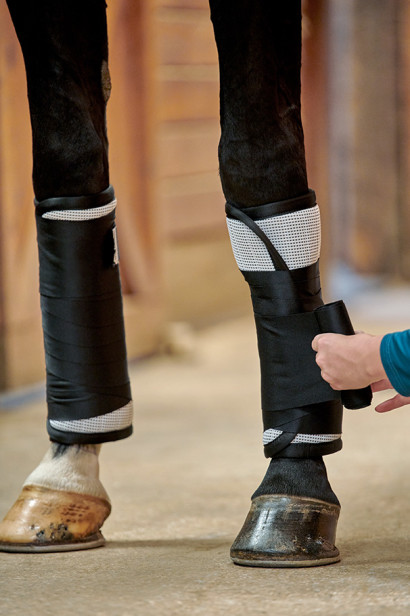Be Prepared for a Horse Emergency - Care & Kit Preparation
By: Dr. Lydia Gray | Updated March 21, 2025 by SmartPak Equine

"I’m a fairly new horse owner, and last week a horse at my barn hurt himself badly enough to need a vet. Now I’m worried that I won’t know what to do in an emergency (or worse yet, not even know that my horse is hurt or ill)! Can you tell me what to look for and what to do if my horse suddenly gets sick or injured and I’m the only one around?"
While mouth-to-muzzle resuscitation probably won’t be necessary(!), there are some things you can learn and items you should purchase ahead of time so you’re better prepared if (when) your horse suddenly becomes sick or injured.
Understanding Your Horse’s Normal Behaviors and Vital Signs
First, in order to recognize the abnormal, you must be able to recognize normal. And normal for one horse is not necessarily normal for another. Take the time now to know your horse’s normal behaviors and patterns when it comes to eating, drinking, urinating, and defecating. As well as what he does when he’s stalled, and when he’s turned out, so you can more quickly detect when he’s not feeling well.
Vital signs every horse owner should know
You should also know what your horse’s normal vital signs are. Here is one range of normal that veterinarians use:
- Temperature = 99 – 101 degrees F
- Pulse = 28 – 42 beats per minute
- Respiration = 8 – 16 breaths per minute
However, your horse may be at the low or high end of these ranges, or even slightly outside the range, and still be normal. Some owners go so far as to practice measuring capillary refill time, mucous membrane quality, gut sounds, digital heat and pulses, and other parameters. If you are interested in learning these techniques, ask your veterinarian to show you the next time they are at your barn and visit our page on How To Take Your Horse’s Vital Signs.
Your veterinarian can also teach you some basic first aid and general nursing care which you can practice on your own so you feel proficient when you need to use it. For example, do you know how to properly apply a bandage to a leg?
Can you administer oral medication without getting it all over you and the horse? Do you know when and how to cold hose a leg or hot pack a swelling?
I get asked a lot: “what should I have in my first aid kit?” My answer is always: “only things you know how to use!” So, if you don’t know how to give an intramuscular (IM) injection, don’t have syringes and needles in your kit.
And if you have no interest in learning to use a stethoscope, don’t buy a first aid kit that includes one.
Building a Horse First Aid Kit: Essential Items

Here is a pretty basic list of items you probably should have on hand:
- Phone numbers: veterinarian, referral clinic, friends (especially with horse trailers)
- Thermometer
- Bandage scissors
- Antibiotic ointment
- Saline
- Iodine or chlorhexidine scrub solution
- Cling wrap (such as vet wrap)
- Gauze squares and rolls (regular and nonadherent)
- Cotton roll or other padding
- Leg bandages
- White bandage tape
- Duct tape
- Syringes and needles (if you know how to use them!)
- Hoof pick
- Gloves
- Flashlight
- Pen or marker
- Towels
- Tweezers and/or pliers
Shop all equine first aid supplies.
When to Contact Your Veterinarian
The best advice I can give you is to contact your veterinarian at the first sign of a problem. Let them decide if the situation is an emergency that must be seen right away, a serious problem that should be seen within the next day or so, or a simple issue you can handle yourself with advice over the phone. You will probably end up spending less and having a better outcome by involving your veterinarian right away!
Video on What to Have in Your Equine Emergency Kit
In this Ask the Vet video, Dr. Gray explains what first aid every horse owner should know and keep in their barn.